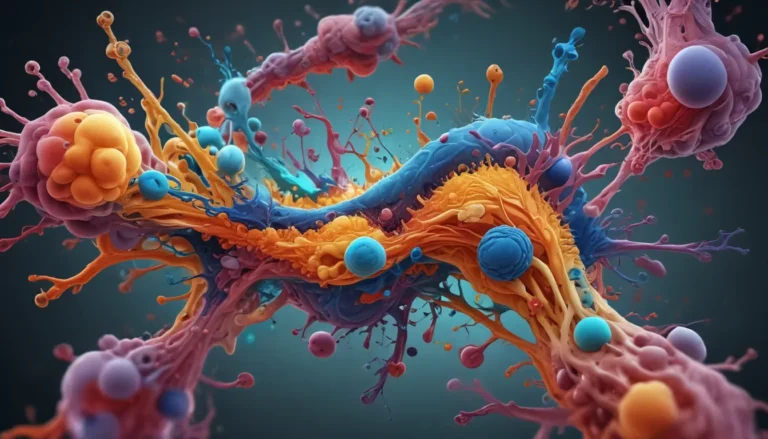A Note About Images: The images used in our articles are for illustration purposes only and may not exactly match the content. They are meant to engage readers, but the text should be relied upon for accurate information.
Welcome to the captivating world of RNA interference (RNAi), a groundbreaking biological phenomenon that has reshaped our understanding of gene regulation and cellular processes. From its discovery in the late 1990s to its potential applications in medicine, agriculture, and beyond, RNAi continues to amaze researchers and enthusiasts alike with its versatile capabilities. In this article, we will delve into 18 compelling facts about RNA interference (RNAi) that showcase its importance in the biological realm and its promising future in scientific innovation.
The Intriguing Nature of RNA Interference (RNAi)
RNA interference, also known as gene silencing, is an intrinsic mechanism found in all living organisms, serving as a fundamental tool for regulating gene expression and orchestrating various biological functions. At the core of RNAi are small RNA molecules, such as small interfering RNAs (siRNAs) and microRNAs (miRNAs), which play a pivotal role in silencing specific genes and fine-tuning protein production within cells.
Unveiling the Origin of RNAi: A Botanical Discovery
The concept of RNA interference was first unveiled in plants in 1990 when researchers discovered that inserting gene fragments into petunias could trigger gene silencing. This groundbreaking observation paved the way for groundbreaking research into the molecular mechanisms underlying RNAi and its widespread presence in diverse organisms.
The Precision of RNAi: Targeting Specific Genes with Precision
One of the remarkable characteristics of RNAi is its ability to selectively target and silence specific genes, offering researchers a powerful tool for unraveling gene functions and exploring therapeutic applications. By leveraging RNAi technology, scientists can explore gene function studies, investigate disease mechanisms, and develop innovative treatments for a myriad of medical conditions.
RNAi as a Shield Against Viral Infections: A Biological Defense Mechanism
In the face of viral invasions, RNA interference emerges as a potent defense mechanism, enabling cells to recognize and degrade viral RNA, thereby limiting viral replication and mitigating the spread of infections. This innate ability of RNAi showcases its role as a formidable guardian against foreign genetic material, including viruses that threaten cellular integrity.
The Evolutionary Significance of RNAi: From Genomic Insights to Therapeutic Frontiers
RNA interference has revolutionized the realm of functional genomics by enabling the precise silencing of individual genes, leading to a comprehensive understanding of intricate biological processes. Moreover, RNAi holds tremendous therapeutic potential, offering a targeted approach to treating genetic disorders, viral infections, and cancer with unprecedented specificity and efficacy.
Harnessing RNAi for Agricultural Advancements: A Greener Approach to Crop Improvement
Beyond its applications in medicine, RNA interference technology harbors immense promise for revolutionizing agriculture, providing a sustainable and efficient method for enhancing crop traits, combating insect pests, and boosting agricultural productivity. By harnessing the power of RNAi, researchers aim to address global food security challenges and promote the development of resilient crops with improved nutritional content and enhanced pest resistance.
Addressing Challenges and Embracing Opportunities: The Future of RNAi Research
While RNA interference holds vast potential for transformative breakthroughs in various fields, including medicine, agriculture, and disease control, researchers continue to grapple with challenges such as off-target effects, delivery methods, and RNA molecule stability. By overcoming these obstacles through innovative approaches and technological advancements, the widespread application of RNAi technology promises to usher in a new era of precision medicine, sustainable agriculture, and scientific discovery.
Conclusion: Illuminating the Path Ahead
In conclusion, RNA interference (RNAi) stands as a testament to the awe-inspiring complexity of biological systems and the boundless potential for scientific exploration and innovation. As we unravel the mysteries of gene regulation, cellular processes, and disease mechanisms through the lens of RNAi, we embark on a transformative journey towards unlocking the secrets of life itself. With each discovery and each revelation, the realm of RNA interference expands, offering a glimpse into the intricate tapestry of nature’s design and the endless possibilities for scientific advancement and human well-being.
Embrace the wonder of RNA interference, and embark on a journey of scientific curiosity and discovery that promises to reshape our understanding of biology, genetics, and the essence of life itself. As we navigate the vast landscape of RNAi research, let us remain steadfast in our pursuit of knowledge, innovation, and transformative change. Together, we can unlock the mysteries of RNA interference and harness its potential to shape the future of biotechnology, medicine, and agriculture.
FAQs
Q: What is RNA interference (RNAi)?
A: RNA interference, or RNAi, is a cellular mechanism that regulates gene expression through the use of small RNA molecules to silence specific messenger RNA (mRNA) molecules, thereby controlling protein production.
Q: How does RNA interference work?
A: RNA interference operates through the actions of small RNA molecules, such as small interfering RNA (siRNA) and microRNA (miRNA), which bind to mRNA molecules and trigger their degradation or inhibit protein translation.
Q: What are the applications of RNA interference in medicine?
A: RNA interference holds promise in medicine for developing targeted therapies for diseases like cancer, viral infections, and genetic disorders by selectively silencing disease-causing genes with precision.
Q: What are the limitations of RNA interference technology?
A: Challenges associated with RNA interference technology include off-target effects, delivery methods, and RNA molecule stability, which researchers are actively addressing to unlock its full therapeutic potential.
Let the radiance of RNA interference illuminate your path to discovery, as you embark on a journey into the captivating world of molecular biology, genetic regulation, and the intricate dance of life at the cellular level. Embrace the marvels of RNAi, and witness the transformative power of science in unraveling nature’s mysteries and shaping a brighter future for humanity and our planet. Explore, learn, and discover the wonders of RNA interference, as you embark on a scientific voyage that transcends boundaries and propels us towards a new era of knowledge, innovation, and endless possibilities.






